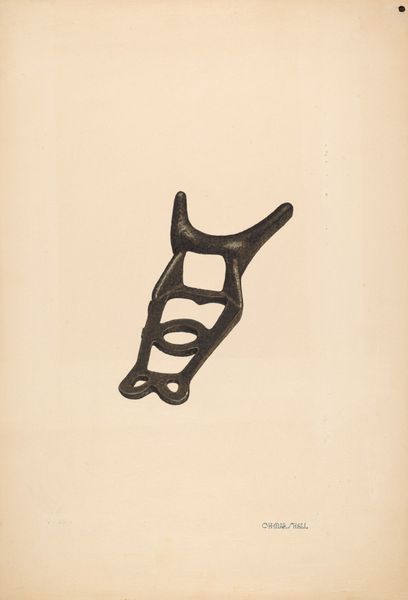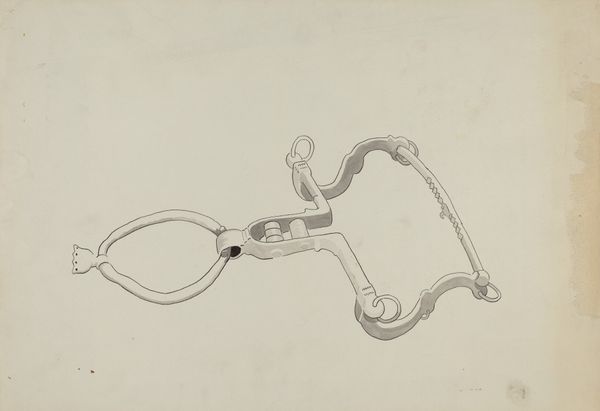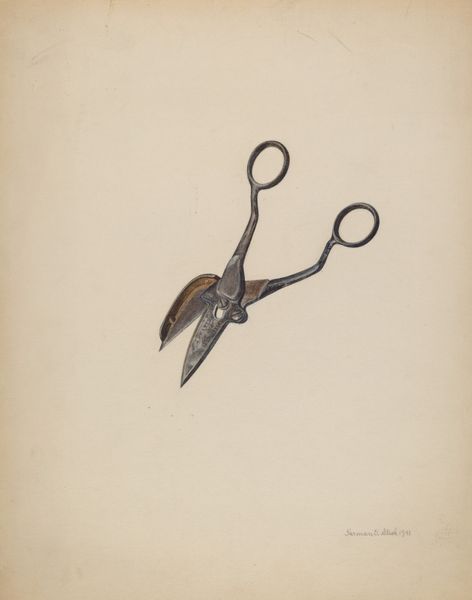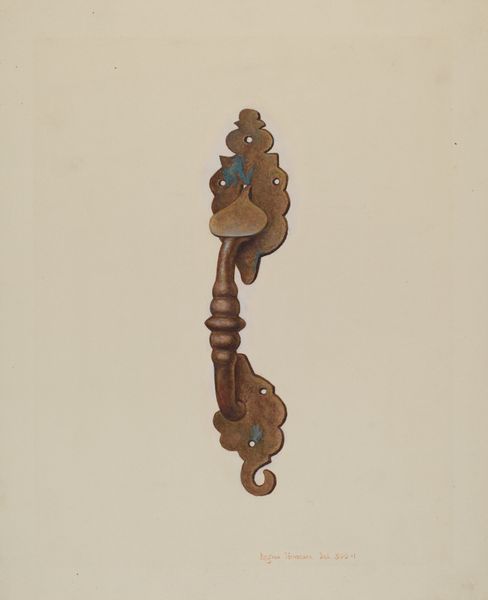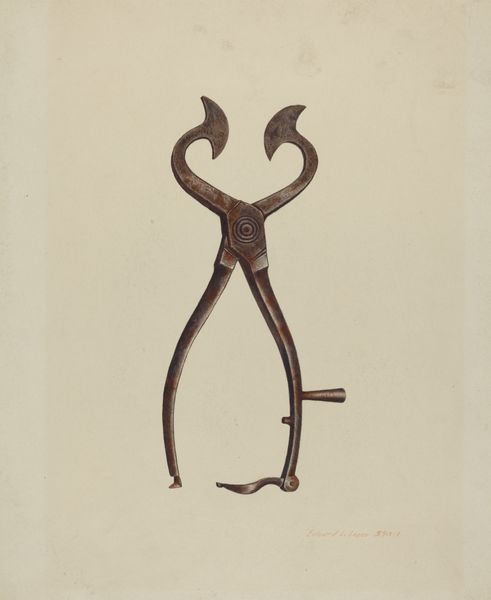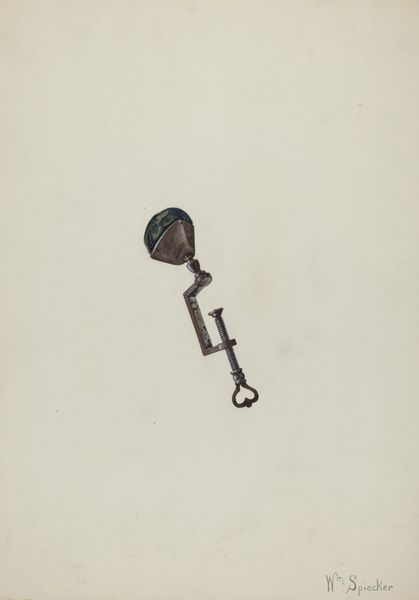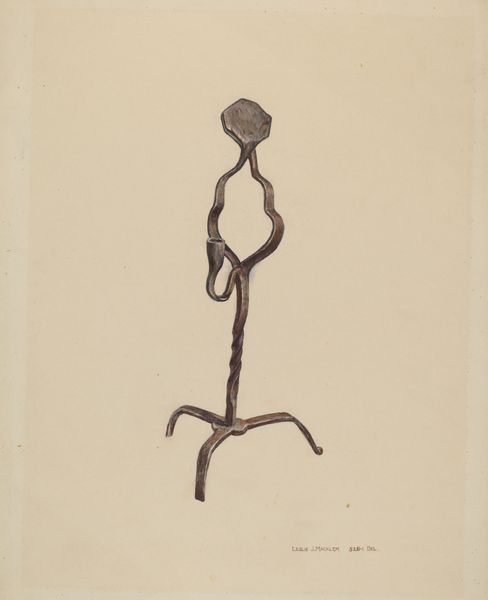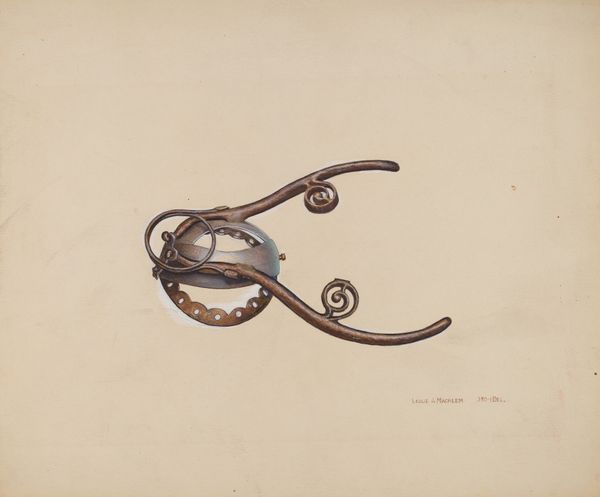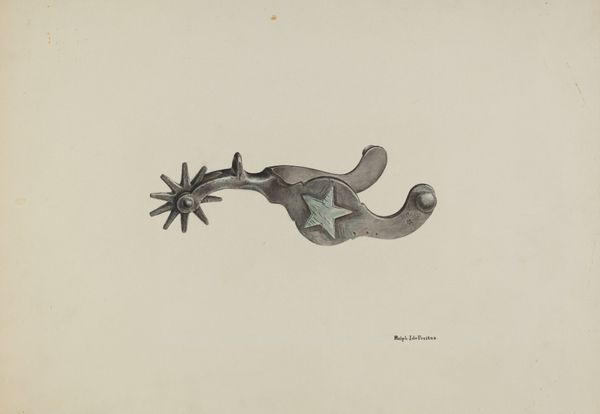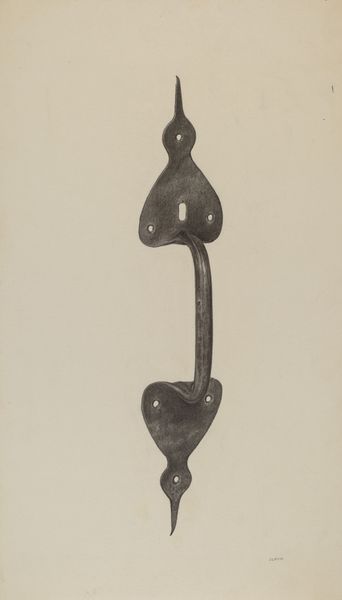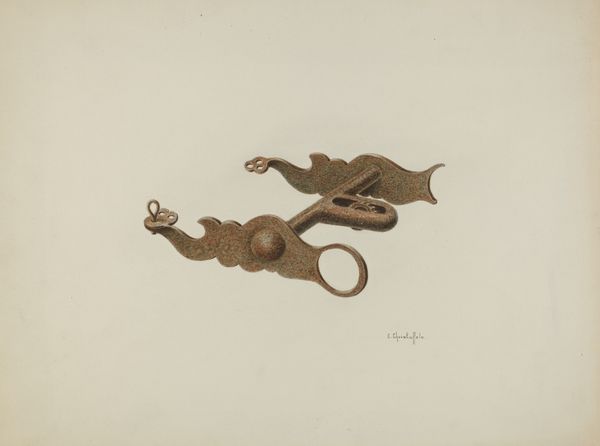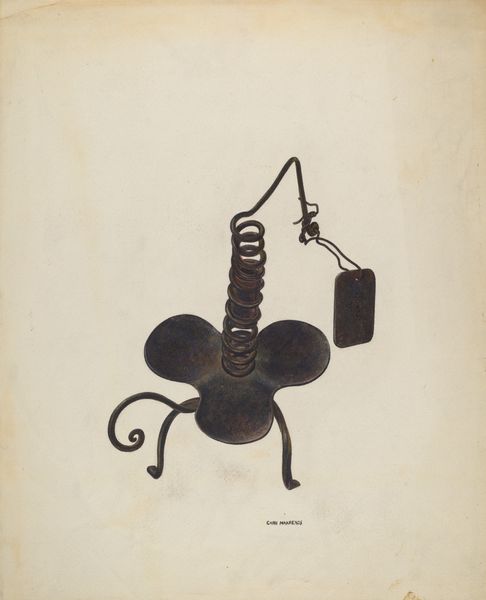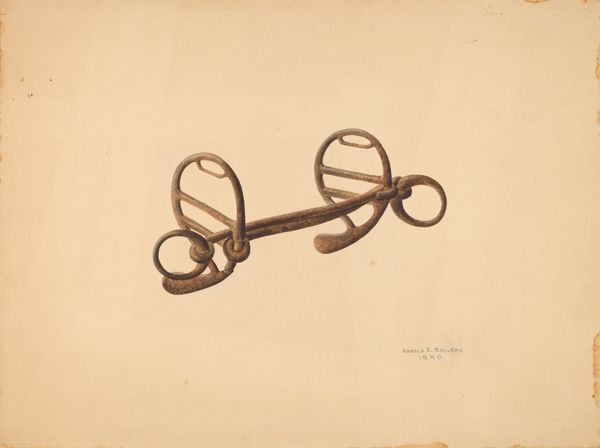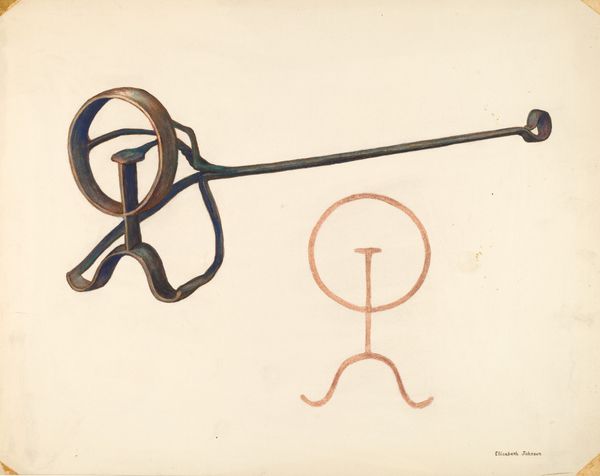
drawing, coloured-pencil, watercolor
#
drawing
#
coloured-pencil
#
watercolor
#
pencil drawing
#
coloured pencil
#
watercolour illustration
#
watercolor
Dimensions: overall: 35.5 x 28 cm (14 x 11 in.) Original IAD Object: 6" wide; 6 3/4" long
Copyright: National Gallery of Art: CC0 1.0
Curator: Immediately, I'm struck by the quiet stillness. The colors are muted, and yet there's something unsettling about it...like a ghost from the past, barely visible on the page. Editor: Here we have A. Regli’s drawing titled "Bit", circa 1940. It's rendered in watercolor and colored pencil. Note how it's a study of two cheek pieces from a horse's bit. The one on the left is highly ornamented. Curator: Ornate, indeed. The decoration almost seems excessive given the object's intended use. I'm reminded that this device exists to control another being, however elegantly. And these are disembodied bits – where are the horses? Where are the riders? Editor: The elaborate ornamentation on the left suggests a high level of craft. Consider the labor invested not just in the metalwork, but in creating the design, transferring it, and executing it in silver or perhaps even platinum inlay. This wasn't just function; it was a status symbol, signaling wealth and the social standing of the rider. Curator: Precisely. But that shimmering blue is what fascinates me. The other piece seems more utilitarian, almost brutal in its plainness. Yet the watercolorist captured its shadow and wear as much as they lavished detail on the decorative one. Is this about contrasting social positions then? Wealth against utility, decoration against service? Editor: We can also view it as a historical record. Objects like these represent a moment in material culture, a snapshot of artisanal techniques and the prevailing aesthetics. The coloured pencil details enhance the texture and the wear and tear visible in the metal. Curator: Thinking about it, maybe it's the artist celebrating a craftsman’s hand and vision, but also acknowledging its darker purpose. All that shimmering, decorative excess hides a more violent job for someone. Is that reaching? Editor: Art always involves layers of interpretation! In Regli's "Bit," we see craftsmanship and utilitarian objects juxtaposed. That juxtaposition invites us to consider questions of labor, status, and social narrative. Curator: A silent whisper from the past, reimagined in watercolour and pencil. I find it oddly melancholic. Editor: Indeed, a quiet contemplation of art, craft, and a world that once valued elaborate, often problematic, symbols.
Comments
No comments
Be the first to comment and join the conversation on the ultimate creative platform.
